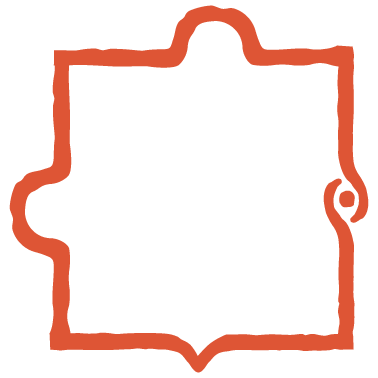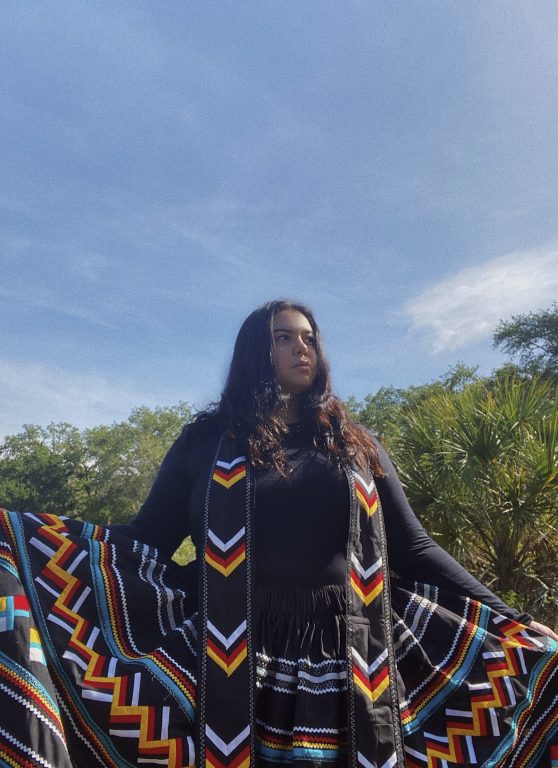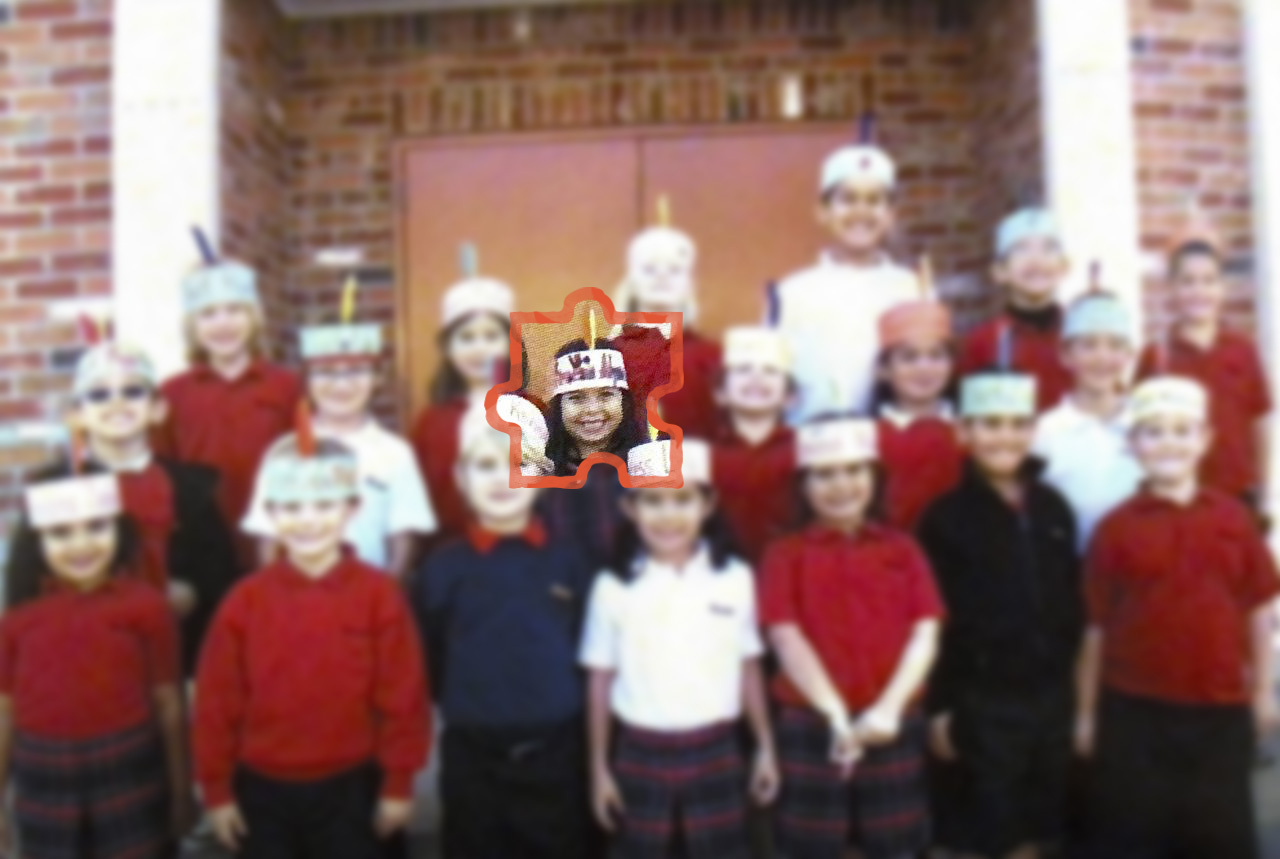Native in America
Native in America
A Syracuse University student's journey growing up as a half-white member of the Seminole Tribe of Florida.

’ve always been more in touch with my Native side, but my white side is a constant reminder of the unfortunate divide between me and my Native culture. There are times when I feel like I belong, whether in society or on my reservation, but I almost always end up feeling like an outcast no matter where I am. Somehow, I feel less Native simply because of my blood percentage despite the attempts I make to understand the intricacies of my culture. I realized how removed I was from Native society when my own grandmother called me and my siblings her “white grandchildren.” Until I grasped the fact that I was the white grandchild, I never quite understood that there was a disconnect between us. My grandmother lived through so much hatred in this country at the hands of white people, just to have part of her legacy be me, a half-white grandchild. Even if she didn’t mean it in a negative way, this label made me feel like an outsider and a disappointment.
I’m a born and raised half-white Native American from Hollywood, Florida. I’m a member of the Seminole Tribe of Florida, also known as the “Unconquered People.” My ancestors didn’t surrender to the U.S. government when they attempted to relocate us to Oklahoma, therefore earning us the nickname of the “Unconquered.” For a good portion of my childhood, I lived in Big Cypress, a reservation in the middle of the Florida Everglades. We lived among towering trees and would occasionally spot a few panthers or alligators every so often. I couldn’t even drive down the street without seeing someone I knew passing by. It was such a small community, we felt secluded and safe. Big Cypress will always remain a part of me, but Hollywood is where I truly grew up. It’s a run-down city about 30 minutes away from Miami, and one of my tribe’s reservations is right in the middle of it all. I lived in Hollywood for 14 years in a small home with only three bedrooms and two bathrooms for eight people. Yes, eight people. It was around this time that I started school and learned how to be polite and well-behaved.

Dealing with the pressure of being the “perfect Native” has followed me throughout my life. If I made one wrong move, I was instantly seen as a troublesome Native. Although I lived in an area with a higher population of Native Americans than most, I attended a predominately white school with students that had completely different views than I had. I was treated in a harsher way than my classmates, and the stereotypes associated with adult Natives were placed upon me from a young age. People assumed my father was a drunk or drug addict, and my teachers expected me to drop out because of the several Native students that had. Since first grade, students called me “redskin” or “savage” without even knowing the connotation behind these words.
I remember sitting in the back of my classroom in elementary school when my teacher asked me whether or not my tribe “still lived in tipis.” First of all, my tribe didn’t live in tipis, we lived in “chickees.” And I’m sorry, but why would I be living in a tipi?
American society has this preconceived notion that Natives are “noble savages,” and my teacher had just echoed that with her ignorant question. There’s a myth created by Jean-Jacques Rousseau that suggests there are people untouched by civilization, that haven’t been spoiled by others’ human nature. This is entirely false. As much as we follow tradition and practice our culture, we live like “normal” people.

On another occasion, someone’s father asked me if I was rich because “my tribe runs an Indian casino.” I was in fifth grade and a grown man asked me if I had money — as if I had any clue about how much financial stability I really had. Dealing with uneducated people is not uncommon, it’s just shocking sometimes to consider how ignorant people can be. Despite this ongoing treatment, I stayed in that school from pre-k until graduation because I knew that if I could accomplish that, I would make people think twice about Natives’ resiliency to institutional racism.
Outside of school, the ignorance is even worse, especially for people like my father. I have the privilege of being a white-passing Native, so I haven’t endured as much hatred as my father has. It’s disgusting to see how my people are treated simply because we don’t fit within white society’s standards. When my father and I flew to New York together, I watched Transportation Security Administration officers pat him down multiple times before we could walk through the airport. Another time a white man swerved in front of us while we were driving, and when my father attempted to confront the man, we were met with instant insults about how we were “redskins,” and we should’ve “stayed on the rez.” My people face discrimination every day, yet it goes unnoticed by a majority of the population. Yet, if we try to break out of this systemic oppression, we’re quickly reminded of the stereotypes that will be slapped onto us, the ones we’ve tried so hard to escape: rebellious, savage.
When I hit high school, I realized how white-washed I truly was and decided to teach myself about the Indigenous issues that were usually swept under the rug. One issue that has become increasingly important to me is the Missing and Murdered Indigenous Women movement, and I’ve dedicated hours to researching how it’s affecting Native communities across the nation. This led me down the rabbit hole of countless Indigenous issues that have yet to be resolved.

It seems as though America overlooks our problems and creates negative stereotypes without attempting to understand the source: American history and its ugly truth. Native Americans have endured mass genocide, yet it’s rarely mentioned in textbooks or mass media. The U.S. government has tried to kill off Native Americans by forcing them onto reservations and planting liquor stores and smoke shops in the middle of them. Drug addiction and alcoholism has ravaged so many communities that my father feels the need to remind me to stay on the right path. The U.S. government stole Native children from their families and forced them to attend boarding schools, where the only goal was to “beat the Native out of them.” As someone with family members who had to experience that torture, it’s revolting to see how few people know about it. America stole our land, children, women, and it even had the audacity to steal our culture.
Overall, America has some serious soul-searching to do regarding the treatment of Native lives. Even as white-passing Natives, the mistreatment my siblings and I have experienced is astonishing, and it wasn’t until 2020 that I’ve seen any form of large-scale activism regarding Indigenous people. We’ve lost so many brothers and sisters since colonizers hit our shores, and the mistreatment of Native Americans has gone on for far too long. Although I’m one voice, I won’t stop fighting for social reform and the overall improvement of life for Natives in America. I was given the chance to get off my rez and change how others see my Native community and people; I’ll be damned if I don’t take that opportunity.
Author’s Update:
After releasing the original “Native in America” article, I didn’t expect it to get as much attention as it did. Writing my story and having others genuinely care about the words I was sharing is an incredible feeling. The Daily Orange published an article about Native American activists around campus, people were sparking up real conversations about Native culture, and now I’m writing for this incredible project. But one thing I honestly didn’t expect was for my story to reach my hometown and high school. A week or two after I shared my story, my mom called to let me know about a huge change they were making because of it.
My K-12 school officially decided to ban all students from dressing as Native Americans for any reason, with the main culprit being Thanksgiving celebrations. Now, the new rule ensures that teachers cannot have young students make and wear headdresses for Thanksgiving events. Hearing that my article was the catalyst in improving Native representation aimed at young children was unreal and renewed my motivation to continue advocating for Native rights. I’m dedicated to creating change, even if it’s at one small private school in South Florida at the moment. Who knows what it could lead to next… and what’s the harm in dreaming big?
Editor’s Note:
This story was originally published in October 2020 edition of Jerk, a student-run magazine at Syracuse University.

